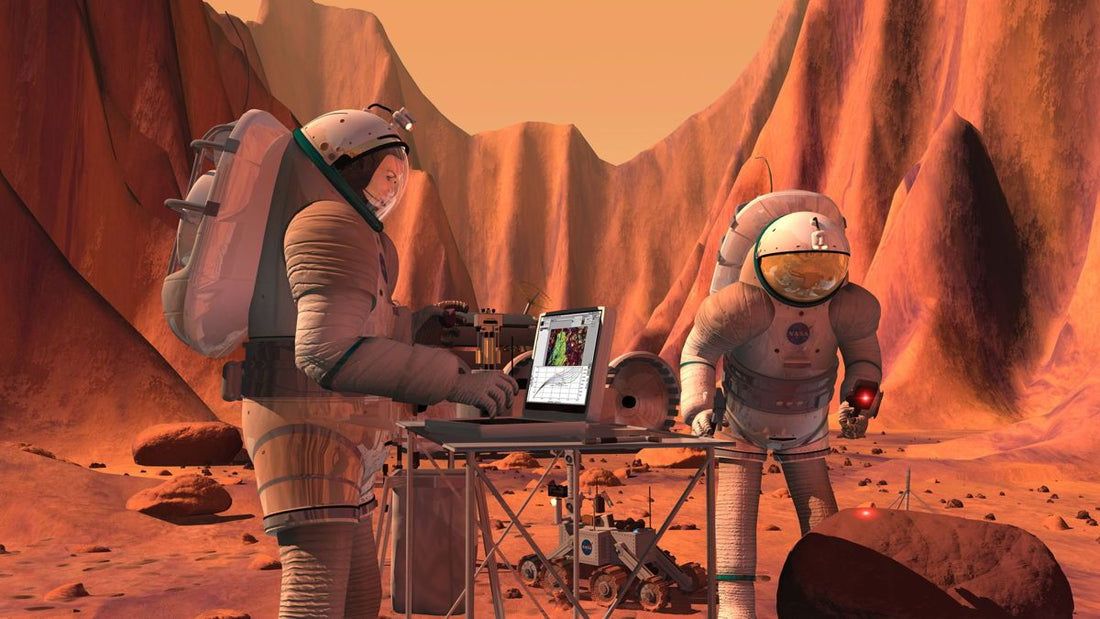
How Many Settlers Do We Need On Mars?
Share
We, as in humanity, have put a lot of thought into colonising Mars.
From sci-fi graphic novels and films stretching back decades to the Artemis missions and grand plans of SpaceX today.
But they all been based on assumptions and "best guesses" of how we'd actually do it, what it would look like, and how many humans it would take to make it happen.
We've received a question from our Australian Space Society that addresses this perfectly.
"Hi ARSE long time lurker in the group first time ARSE-asker. I watched a TED talk and it was about Mars and the technology that it would take to get us there and how we'd live there.
I was wondering though, they reckon there's a whole bunch of gear and stuff that needs to be maintained to make colonies livable on Mars so how many people need to look after it? It seems like heaps.
Cheers,
Cath"
Fantastic question Rachel.
Author Jean-Marc Salotti performed a study on this exact subject called "Minimum Number of Settlers for Survival on Another Planet."
A catchy title that gets straight to the point, right?

The professor at the Bordeaux Institut National Polytechnique tackled the main issues such as organisation, equipment needed, extracting Mars natural resources, and the skills and abilities of people needed.
Now, there's been studies about this type of stuff before and they've mostly been inaccurate.
What Salotti found, and fixed, was the aforementioned issue of using Mars own resources.
This would give us a slightly more optimistic number of people than previously thought.
This is super useful especially as visionary minds such as Elon Musk believe they can create fleets of starships can carry 100 people at a time. Plus they would do back and forth trips to the crusty red planet.
For all his optimism, this isn't realistic.
Instead, Salotti said: "I show here that a mathematical model can be used to determine the minimum number of settlers and the way of life for survival on another planet, using Mars as the example."
He also added: "However, this is an optimistic estimate of the capability of the capability, the feasibility of the reusability remains uncertain and the qualification for vehicle landing on Mars and relaunch from Mars could be very difficult and take several decades."
Cool.
What he means is gas and minerals can be harvested from the atmosphere and soil respectively. A well as a good many other precious materials such as iron and glass.
This mightn't seem like much but could lighten the load of both the craft on route to Mars and the skills needed by personnel.
He also calculated a factor he calls the "sharing factor", "which allows some reduction of time requirements per individual if, for example, the activity concerns the construction of an object that can be shared by several individuals."

So with that, Salotti found there are two main factors that determine the number of humans needed for survival:
- How readily available Mars' resources are for harvesting including water, oxygen, and various other useful chemicals.
- The efficiency of production of needed tools and materials.
To put it plainly, Salotti used all available data to determine an equation, even if by his own admission it's optimistic. The two main variables of resources and production are the main mammy-jammies and the ability to "share" useful objects and equipment.
Psst! Clint the Intern here, just letting you guys know there's FREE SHIPPING on hoodies while they last. There's no better way to spread ARSE than to wear it, just like our mate Nikita here.Have a look here and I'll see ya on the socials! - Clintern
How to think of the equation
Think of the burden of being a single human on Mars and how much work it would take to establish a livable environment for yourself.
You simply couldn't.
You'd have to acquire your own drinking water, oxygen, power generation just to name a few.
There just isn't a possible way for it to happen.
Even if you made it possible to breathe you'd have died of dehydration.
If you somehow managed to create a breathable environment with water you'd have died of starvation.
So how many people would it take?
That's the basis of what we're really asking.
How many people could share the burden?
Granted that a larger settlement the demands on water, oxygen, and power also increases. But there is a sweet spot where the equation balances out and provides a rough and (I'll say it again) optimistic answer.
More hands making lighter work and creating more resources for survival than it costs per person.
And the answer is...

110 people!
The above figure shows that annual working time capacity is greater than the annual working time requirement at the 110 person mark.
Which means this is the minimum number of people that can share the workload on Mars.
This covers the flight team to get them to Mars and sharing the workload and equipment needed for survival such as:
- ecosystem maintenance
- energy production
- industry
- building
- human factors
Salotti added: "If each settler was completely isolated and no sharing was possible, each individual would have to perform all activities and the total time required would be obtained by multiplication by the number of individuals."
He's pretty much saying what we said but way more researchy.
"It is based on the comparison between the required working time to fulfil all the needs for survival and the working capacity of the individuals," he said.
If we plan on working towards settling Mars, models such as this - although theoretical - can help us plan and get a better understanding of what's needed.
Do you think he's on the money?
Or is there factors missing?
Let us know in comments and share to spread ARSE far and wide!
#Space_Aus





